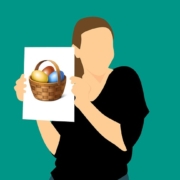Compelling Product Copywriting – A Recipe For Success
I was visiting a client that produces designer jewelry and tableware and had the opportunity to get up close and personal with his stunning pieces. As I held one of his forks in my hand, I could feel the heft of the metal and the curvature of the handle, feel an appreciation for his spiritual vision along with the superior artistry, craftsmanship and elegance of his ladder-style design that was inspired by angels ascending into heaven. That experience helped me rationalize that it was a $40 dinner fork.
Then I went to his website, where I found a picture of the fork, the price, and the description – “High gloss polish, marine grade stainless steel fork.” Sure it looked nice, but needless to say I wasn’t whipping out my wallet to buy a single fork for more than an entire cutlery set might cost at Target.
The client had a compelling story – third generation silversmith who sold his belongings and immigrated to the U.S. to fulfill his dream of building his own design house. His unique processes utilized advanced 3D modeling technology to produce some amazing designs, while his vision came from his intriguing philosophies about how art manifests itself.
Some of this was mentioned on the “About” page, but what defines the brand is also a big part of how each product is conceptualized and developed. The connection with the brand, the process, the unique craftsmanship and the vision is a big part of what separates a $40 fork from a $1 fork, not just physically, but mentally. So integrating this messaging throughout the site including on the product pages is vital.
Maya Angelou (among others) has said, “They may forget what you said, but they will never forget how you made them feel.” It’s hard to recreate the physical retail experience on the web, but it’s possible to help paint the picture of the product in the mind of the visitor through words and images that don’t just show the product, but add context (I.E. showing the fork as part of an elegant place setting during a holiday family meal with happy, upscale people). If you have a service, help them visualize the sense joy and relief as a result of their problems being solved. That is what helps make your product and your brand memorable and aids in converting browsers into buyers.
Furthermore, before you spend time and money acquiring traffic, it’s critical to put yourself in the best position to actually convert the traffic that comes to your site. A key factor in doing thing is through compelling copy that helps the user connect with your brand, understand how your product/service benefits them and helps them solve a problem (this does not mean just list out generic product specs/features!), and ultimately leads them through the buying process.
While virtually all experts would agree that focusing on the needs of your target customer is rule #1, Forbes suggests the 80-20 rule when it comes to copywriting. “At least 80% of your copy should be written in the second person (i.e., “you”) and no more than 20% should be written in the first person (i.e., “I” or “we”). No one cares about you, so make sure your copy answers the consumer question, ‘What’s in it for me?’ (WIIFM). Tell the target audience exactly what they’ll get when they take out their hard-earned money and buy from you.” Forbes also suggests keeping it simple and easily readable. Ecommerce platform provider Shopify reiterates these points, but also goes into even greater detail, such as using sensory words and stories like in the earlier fork example, as well as how to properly use superlatives, social proof, and proper formatting to help create this connection with the reader.
Developing an understanding of what matters to your customer and what defines your brand, then enthusiastically communicating it through your website and throughout your online presence is a recipe for online success.
About the author: Michael Epstein

Michael Epstein founded an ecommerce business 15 years ago in his college apartment with $500, and generated over a million dollars in sales the first year. He continued to grow his company to tens of millions in sales until it was acquired in 2013. He now advises other online companies, from startups to $100M+ retailers, on holistic digital marketing strategy. Follow him on Twitter and LinkedIn, or visit his blog.



